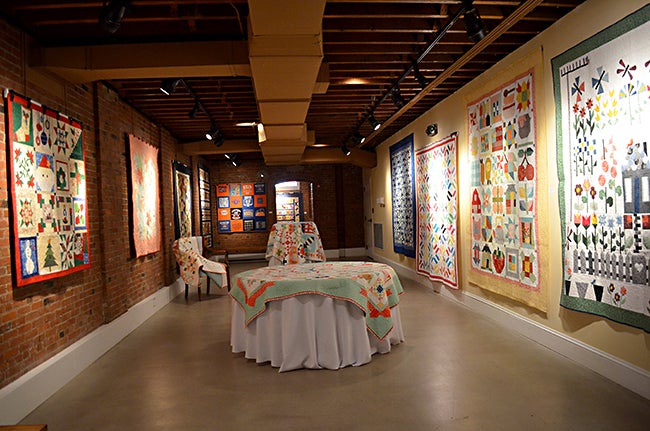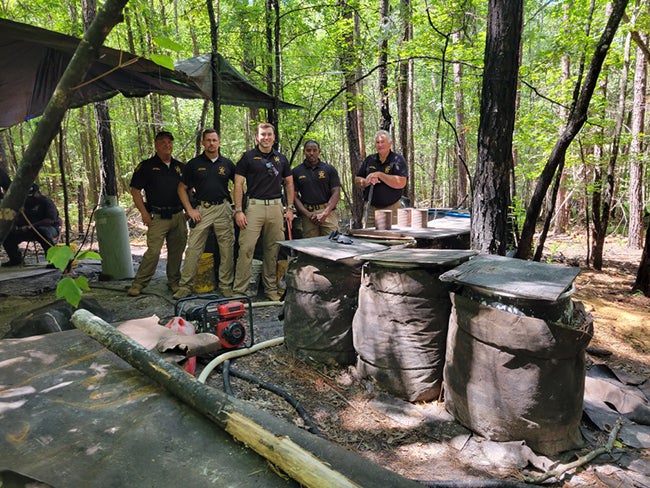Back to the warmth of childhood at Christmastime
Published 11:00 pm Friday, December 21, 2012

Some of Ann Hart’s antique ornimants once belonged to her grandmother. She said they are the most special to her and help to bring warmth to the Christmas season. The oldest ornamnet in Hart’s collection is a small glass heart dating back to about 1880.
At Christmastime, there’s no better place to be than in the warm memories of childhood.
When Ann Hart decorates for Christmas, the home she and her husband, Charles, share has the warmth of her grandparents’ home at Christmastime.
“It’s so wonderful to go back there in my memories,” Hart said, with a smile. “When I’m decorating, it’s like I’m back with my grandmother again. Some of these ornaments belonged to my grandmother. All of the ornaments are special but my grandmother’s are even more special.”
Also special are the ornaments like those Hart “picked out” at the dime store in her hometown of Evergreen.
“The ornaments were displayed on the counter in bins divided with glass,” Hart said. “The ornaments were sold individually for 5 and 10 cents. Every now and then, I would splurge and get a 10-cent ornament and how excited I would be.”
The Hart home is beautifully decorated with an “old fashioned” cedar tree, cut fresh and brought home from the Pike County woodlands.
“When I was growing up, we always had a cedar tree and so for me, a cedar tree is ‘the’ Christmas tree,” Hart said.
From the time she was a very young girl, Hart has had a heart for Christmas.
“I love Christmas and everything surrounding it,” she said. “I was just a little girl when I started collecting Christmas ornaments and I still collect. They are fascinating.”
The ornaments that bring added beauty to the Harts’ seven-foot cedar and their six feather Christmas trees, don’t tell the full story of her collection. There’s no way to display all of the ornaments during a single Christmas season.
“The first Christmas ornaments came from Germany so, many of my ornaments are from Germany,” Hart said. “The story is that F.W. Woolworth brought Christmas ornaments to the United States for use in his stores as Christmas displays.”
The Germans relied on the tree as a central symbol of Christmas and they also found purpose for an artificial Christmas tree.
Hart said the story is that German wholesalers needed to display their Christmas wares year-round, thus the feather trees of which Hart is so fond.
“The feather tree manufacturing was a cottage industry,” Hart said. “The feather trees were constructed with a wood dowel as the trunk. The branches were made mainly of turkey and goose feathers but sometimes ostrich and swan feathers were used. After World War I, the feather tree disappeared, so my feather trees were custom made in Ohio and the branches are made of goose feathers.”
The ornaments on all of the Harts’ Christmas trees are antique, most dating back to the early 1900s, with the oldest, a small glass heart from around 1880.
“The ornaments on the feather trees are all glass and are all shapes and sizes,” Hart said. Some of the ornaments are simple balls, some have identifying shapes and others have decorative indentions.
A snow-covered glass ornament was made by the Shiny Brite Glass Company and the snow is made of ground glass or mica.
“One very interesting ornament is called a spinner,” Hart said. “It is to be hung on the tree near a light. There’s a ‘spinner’ inside the ornament that will spin when it gets warm from the heat of the light.”
The garlands on the feather trees are made of tiny glass beads of different colors.
“Some of the garlands have glass pine cones, some have hearts and some Japanese lanterns. Those are very unusual,” Hart said. “The glass garlands are very fragile and they were easily broken.”
The Harts’ cedar Christmas tree is decorated with many different kinds of ornaments, including glass bird ornaments with wings made of strands of feather-like glass.
“The paper bell ornaments were popular back in the 1940s and 1950s and ornaments that are so interesting to me are the scrap and tinsel ornaments,” Hart said. “These are homemade ornaments and they were made from ‘scraps’ from Christmas cards and post cards and embellished with tinsel. The first scrap and tinsel ornaments were made in Germany in the early 1800s and because popular in the United States during the post-Civil War era. They depict angels, animals, Father Christmas and Nativity scenes.”
The Harts also decorate their home with a collection of antique Santas and reindeer.
Most of the Santas are from the 1940 era and come in all different sizes and shapes.
“We have a lot of the plastic Santas that carried candy in the sacks on their backs,” Hart said. “They are from the 1940s and 1950s and were purchased in dime stores and small grocery stores for Christmas surprises for children.”
Other Santas are made from cloth with faces of molded materials.
“The older Santas, pre-World War II, have blue pants,” Hart said. “After that, most all of the Santas were clothed in red and black with white fur.”
The reindeer that guide the Harts’ Santas are made of plastic and come in primarily white and gold. The villages that Santa visits on Christmas Eve are the cardboard Christmas villages of the mid-1900s.
“All of the ornaments and decorations date from 1880 to the 1950s and each one of them is special because it holds a childhood memory,” Hart said. “Christmas is a special time. It’s a time when I can go back to my childhood and all of its warm and wonderful memories. The old ornaments help take me there and it’s a place I love to be.”





